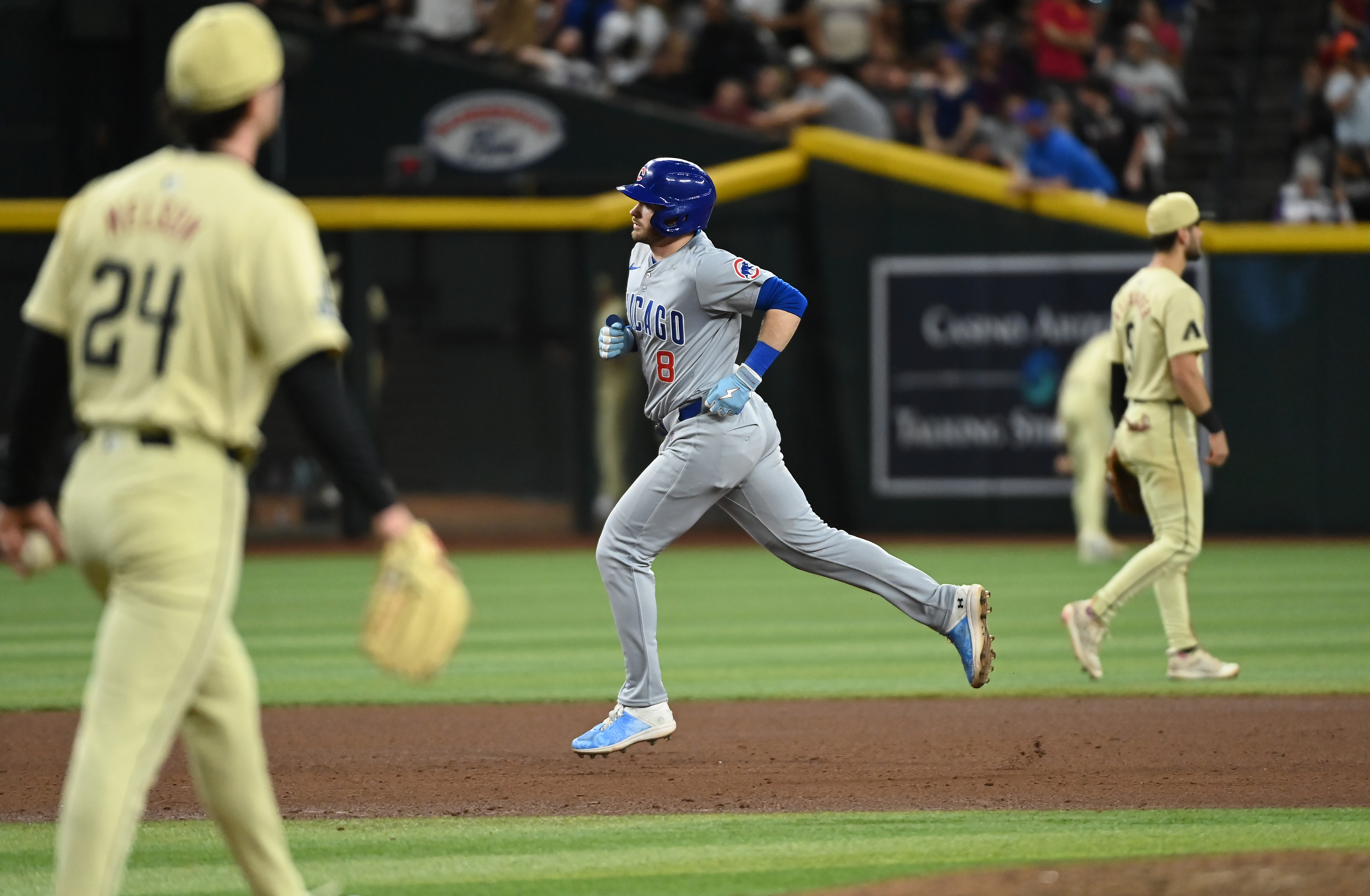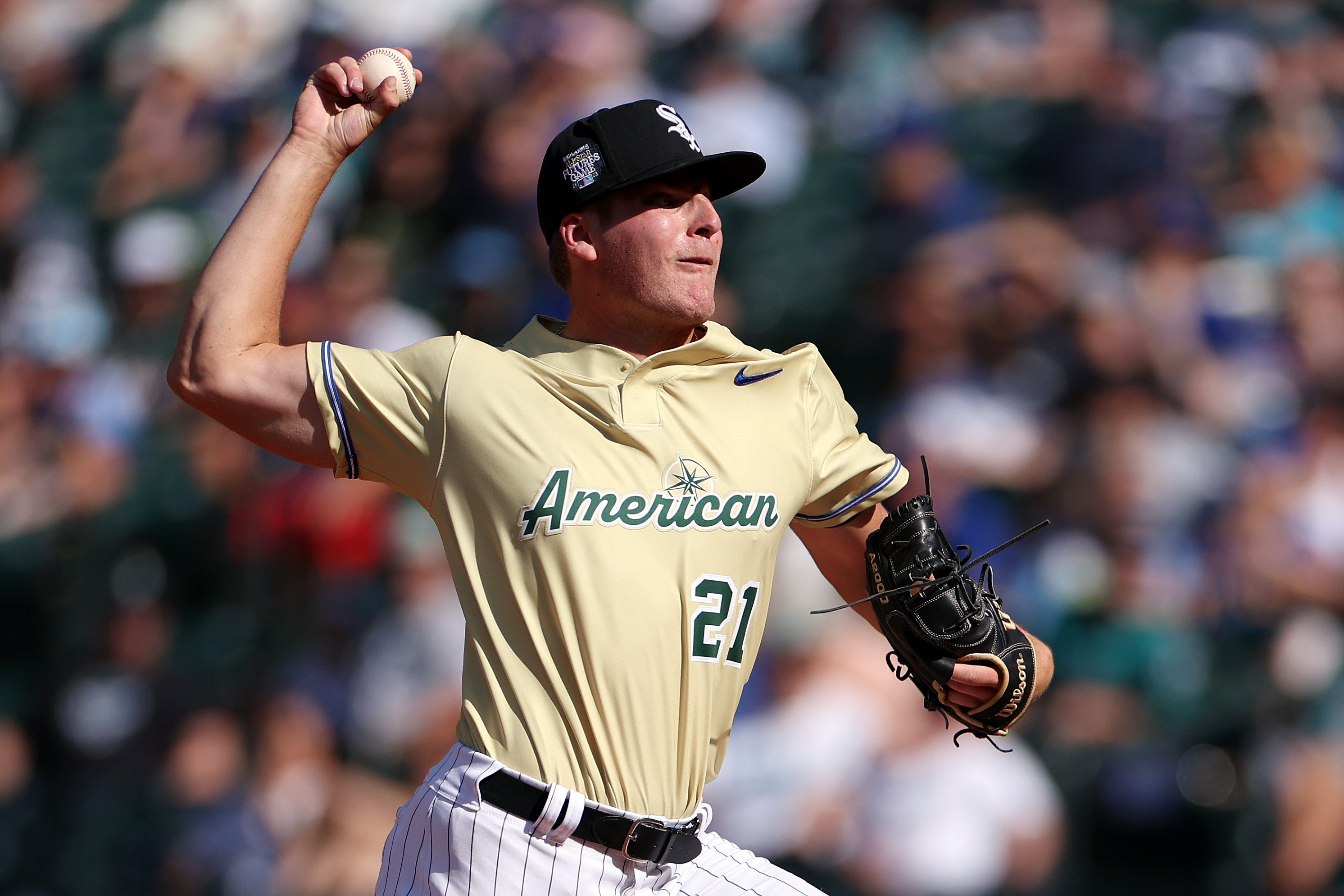ST. LOUIS – Javier Baez – the kid with the Major League Baseball tattoo on the back of his neck – walked into Dave Keller's office and asked to speak with the Class-A Daytona manager.
This was still early in the 2013 season, about two years after the Cubs selected Baez with the ninth overall pick in the draft. Keller had managed Manny Ramirez in the minors and later developed enough of a fluency in Spanish – and an appreciation for cultural differences – to become the organization's field coordinator in Latin America. Keller called in hitting coach Mariano Duncan, a respected bilingual voice who once mentored a young Derek Jeter on the 1996 New York Yankees team that began a run of four World Series titles in five years.
Looking at the schedule and how much Baez had been playing, Keller made him the designated hitter the day before an off day, trying to maximize his rest.
"All three of us sit down. He goes: 'I don't DH,'" recalled Keller, who explained the thinking behind the decision only to get this response from Baez: "'I don't need a day off, either.'"
"Inside, I'm laughing my ass off," Keller said. "But outside, I'm going: OK, we have to continue to help this kid understand boundaries.
"I said: 'OK, that's good to know, you're DH-ing today.'"
Keller and Duncan looked at each other with the same reaction: This guy's unbelievable.
MLB
***
By the time Baez became a breakout star during last year's playoffs, the Cubs had already seen the rough cut of baseball's "Human Highlight Film." The location shoot could be anywhere in the Florida State League and Baez might make a mind-bending play. It just took backdrops like Wrigley Field and Dodger Stadium – and the social-media machinery behind the World Series and World Baseball Classic – for Baez to pop when he stole home or dropped a no-look tag.
"Who doesn't want to be like Javy right now?" said lefty reliever Zac Rosscup. "Everything like that just comes so easy for him. I don't know how to explain it. He's got such a good mind for where he's at on the field. Like in basketball, you would say a court awareness.
"It's got to feel good for those catchers, too. You know if you throw it anywhere around the base, he's going to put down that quick tag, the no-look tag, the between-the-legs tag. I'm just waiting for him to do a backflip."
Bullpen catcher Chad Noble, who played four seasons in the farm system, immediately sensed the curiosity from Cubs coaches Chris Bosio and Mike Borzello.
"The first thing they asked me was: 'What do you got on Javy?'" Noble said. "I said nothing about his hitting. I was like: 'He's the best tagger I've ever seen. He makes everything an out.' I felt weird saying it: 'Best tagger?' I felt stupid saying it, because it's like: 'Who says best tagger?'
"But now it's like a national thing."
When asked for a favorite Javy moment, both Noble and Rosscup vividly remembered Baez diving to his left at shortstop in the ninth inning of Eric Jokisch's 2013 no-hitter with Double-A Tennessee.
"It was like a line drive up the middle that no one on this planet could have caught and he just stabbed it," Noble said.
"You're like, 'Damn, well, there goes the no-hitter,'" Rosscup recalled. "Out of nowhere, Javy comes diving, makes the play. He just does that stuff every day and it's not something where he finds his chance here or there.
"He makes the ridiculous plays look so easy. To pick one moment – I don't think you can – because every time he's out on the field, you want to watch, because there's something exciting going to happen."
***
One of the original "Javy Being Javy" stories circulated around the Cubs leading up to the 2011 draft, out of an all-state event for the best players in Florida, where each guy was supposed to introduce himself and say his hometown and where he committed to play in college. So Baez, the legend goes, stood up and pointed to that tattoo on the back of his neck and announced: "I'm going to the University of Major League Baseball."
Tim Wilken, the scouting director at the time, had framed the question to his staff like this: What's harder to find, a middle-of-the-order hitter or a frontline starter? The pre-Plan Cubs came to a Theo Epstein conclusion.
Even if Baez had some rough edges, a great sense of swagger and all-or-nothing stretches at the plate, Wilken didn't really view it as a high-risk play, because hitters are safer investments near the top of the draft, middle-infield athleticism is so valuable and the baseball IQ would open up even more possibilities.
One particular play during an A-ball game in Clearwater foreshadowed "The Javier Baez Show" that ran last October.
"He took one of his hernia swings and had so much topspin on it that the left fielder didn't know what to do," Wilken recalled. "At the second he jumps – he was a left-handed throwing left-fielder – it's got so much spin it almost hit him around the elbow area.
"The ball drops straight down, and I'm sure the poor kid had never seen a ball hit with that much spin on it. The kid does come up firing to second and he's got Javy dead to rights, because Javy didn't get out of the box. He took (his time). And then he does one of those famous swim moves.
"Chris Truby – who's an ex-big leaguer and was the manager for (the Phillies' affiliate) – starts running across the field. He looks and he knows that Javy was safe. He just throws his hands up at the play and turns around and storms back. He didn't even argue."
Wilken – a gifted storyteller who drafted Chris Carpenter and Roy Halladay for the Toronto Blue Jays and now works as a special assistant with the Arizona Diamondbacks – also flashed back to the 2013 Southern League playoffs against Birmingham.
"Javy hit a home run to left-center in Knoxville," Wilken said. "It was almost like a fence-scraper and Javy turns around and starts yelling toward the plate. And I'm going: 'Oh, s---! We're going to get into a fight here. He's yelling at the catcher.'
"He wasn't yelling at the catcher. He was yelling at the umpire, saying: 'How could you miss it? That was a catcher's interference!' Because the glove had hit Javy's bat. No kidding, I mean, that was amazing. I'm just sitting there going, 'Oh, we're in a fight.' And, no, he was yelling at the umpire."
***
That sixth sense reminded Keller of watching Omar Vizquel and Roberto Alomar when he worked on the major-league staff with the Cleveland Indians in the early 2000s.
"All I remember talking about the whole time when (Javy) was there was his instincts for the game were off the charts," Keller said. "He would do stuff in the game that was so further advanced than that level at the time, whether it was a pop-up in the infield, and then letting it drop because he knew who was running, so he'd try to get the fast guy and leave the slow guy on base.
"Or his ability to steal third at that level was better than I've probably ever seen anywhere on any team that I've ever been with. It was just more or less trying to keep him focused every day to play, which was really no problem, because he came to play. But with so many kids at the lower levels, you don't really worry about the game. You worry about what's going on with them between 1 o'clock and 6 o'clock."
Keller moved his hand in a flat, straight line to describe the college hitters like Kris Bryant (16 games in 2013) and Kyle Schwarber (44 games in 2014) who breezed through Daytona while the Cubs sold off pieces from their big-league team to build for the future.
"All the little things that people don't do at the lower levels, (Javy) was doing," Keller said. "The tags – you could tell right away. His ability was almost like you would think it was sneaky, you know what I mean? But at the big-league level, it comes off as unbelievably intelligent, anticipatory, whatever you want to call it, because his mind thinks that way.
"We found out right away that mentally he was way advanced. But what winds up happening is the physical ups and downs get into the emotional part of it. And all those guys deal with that. As soon as they get through the emotional part of it, the better off they'll be.
"Javy was a little bit different, because he showed his emotions a lot more than those guys. Once they get the emotions under control – not that they were out of control – but it's maturity. That's why we have the minor leagues."
***
Baez has a short mohawk with his hair dyed blond at the top. His left arm now features a tattoo with the Cubs logo and a 2016 World Series trophy. But he blends style and substance with a willingness to analyze his weaknesses, ask for help and listen.
"I've been learning from everything," Baez said. "It's not like I like failing. But that's when you learn to make your adjustments and to get better at stuff that you didn't do in the past."
Jose Flores, the infield coordinator, also grew up in Puerto Rico, spoke the same language and even coached Baez' older brother, Rolando Agosto, in winter ball. Flores still first noticed the same quiet, introverted streak that probably kept other teams guessing when Baez came out of Arlington Country Day School in Jacksonville.
"At the beginning, it was just a little bit tough to communicate with him, because he's very closed," Flores said. "I told him: 'I'm just going to let you go out there and perform and eventually you're going to come to me.'"
Three years before he would change playoff games with his defense and become a National League Championship Series co-MVP, Baez committed 31 errors in 73 A-ball games.
"I just let him play," Flores said. "One time I visited Daytona and he's like: 'What can I do to get better defensively?' I said: 'All right, now we're talking, let's just start working.' And from that day on we established a really good bond.
"Once he started failing, he's like: 'What do we got, Flo? What can I do here to get better?'"
For all the flair to his game, Baez is a baseball gym rat. He developed a consistent, game-speed routine. He focused on his pre-pitch positioning and being less jumpy, so that he would have sharper reflexes and better reads off the bat. He changed his arm angle to improve his accuracy.
Joe Maddon, a free-spirited, unconventional manager, allowed Baez to be himself and play with passion. His younger sister, Noely, who was born with spina bifida and died two years ago, gave Baez a renewed sense of purpose and inspiration. A star-studded cast allowed Baez to make mistakes, find his role and blend more into the background – at least until the biggest games in franchise history.
That's why Maddon did a World Series tribute and made Baez his Opening Night second baseman, shifting Ben Zobrist to right field during Sunday's 4-3 loss to the St. Louis Cardinals at Busch Stadium. This viral sensation has been years in the making. The guy who doesn't DH is willing to do whatever it takes for some more championship bling and maybe another World Series tattoo.


